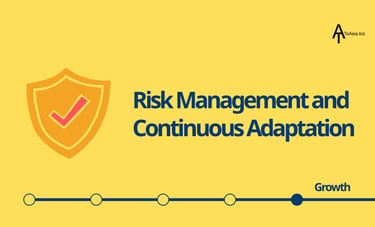Effective Asia Market Entry Strategies for Global Businesses
ASIA BUSINESS FACTSBUSINESS TIPS
Alan Wong
5/7/202412 min read


What is a Market Entry Strategy?
A market entry strategy is a planned method of delivering goods or services to a new target market and distributing them there.
This approach details how an organization intends to deliver its unique value proposition to customers in a way that achieves its business goals, ranging from exporting a product to establishing a joint venture or direct investment.
It encompasses decisions regarding market segmentation, positioning, and the deployment of resources, all crucial to gaining a competitive advantage.
In essence, a market entry strategy forms the foundation for potential growth and the sustainability of operations in a new market.
Strategic Asia Market Entry Planning: Understanding Legal Systems and Regulatory Frameworks
Companies looking to enter Asian markets must diligently research the specific legal requirements of each target market, which encompasses business registration, tax obligations, employment laws, and sector-specific regulations.
Staying updated is essential, as these legal frameworks often evolve in response to economic shifts and global integration, requiring businesses to adapt swiftly to maintain compliance.
Understanding the nuances of each country's legal system is crucial.
This involves detailing the process for establishing a business entity, outlining the rights and obligations of foreign entities, and familiarizing oneself with the available legal protections and preferred dispute resolution mechanisms, such as arbitration and mediation.
For example, while alternative dispute resolution methods are increasingly favored across Asia, traditional court systems in countries like India and Indonesia are noted for their procedural delays, highlighting the necessity for well-crafted contracts to avoid legal complications.
Navigating these diverse legal landscapes demands a comprehensive understanding that aligns with both business goals and local legal environments.
For instance, China's complex regulatory framework requires thorough compliance with local business practices, contrasting with Singapore’s more straightforward and business-friendly environment.
This strategic adaptation to local legal and regulatory frameworks is not merely a compliance exercise but a strategic advantage that significantly influences the success of business operations in Asia.
Asia Market Entry Strategy Conclusion
Throughout this exploration of market entry strategies for Asia, we have emphasized the necessity of a meticulously structured and highly adaptable approach.
Successfully entering and expanding in the Asian markets demands more than a one-size-fits-all strategy; it requires a localization approach that considers the unique economic, cultural, and regulatory landscapes of each country within the region.
Key to this approach is the deep understanding of local markets.
This includes grasping cultural nuances that affect consumer behavior and business interactions, as well as developing operational and financial strategies that align with local practices and regulations.
Whether it's choosing the right business entity to optimize operational effectiveness, adapting marketing strategies to resonate with local consumers, or managing finances to mitigate risks associated with currency fluctuations and economic variability, each aspect of your strategy must be informed by local insights.
Furthermore, forming local partnerships and recruiting local talent are indispensable strategies.
These local connections not only facilitate smoother market entry and operational setup but also enhance long-term business resilience and adaptability.
With over 50 years of experience combined with our team at ToAsia.biz, we are ready to provide business consultation services to lead your business into the Asia Pacific region - profitably.
By integrating local insights and expertise into your business operations, you can navigate the complexities of the Asian markets more effectively.
In conclusion, the potential for growth and success in Asia is significant, but it requires a well-considered strategy that embraces the diversity and dynamism of the region.
Companies that are willing to invest in understanding and adapting to the local environments will find Asia a fertile ground for expansion, capable of delivering substantial returns on investment.
Embracing this complexity with a flexible and informed approach will be the cornerstone of successful market entry and expansion in Asia.
Talk to us now and see how our growth strategy is different from business consultants out there where our focus is to help you expand at the right pace, staying lean and profitable.


The Significance of Entering Asia's Dynamic and Diverse Markets
Asia, a continent marked by its vast and complex mosaic of markets, presents a fertile ground for businesses looking to expand internationally.
The region is not only the largest continental economy by GDP but also home to some of the fastest-growing economies in the world, such as China, Japan, India, and Southeast Asian nations.
Each of these markets offers unique growth prospects driven by increasing urbanization, a growing middle class, and a significant increase in consumer spending like India's affluent population poised to hit 100 million by 2027.
However, Asia's diversity extends beyond economics into intricate culture, language, social, and political dimensions.
Each country boasts its own distinct business practices, consumer behavior, legal frameworks, and regulatory environments.
For example, negotiating business deals in Japan involves understanding the nuanced art of non-verbal communication, while in China, it is crucial to navigate complex government or business relationships and guanxi (the system of social networks and influential relationships that facilitate business and other dealings).


The Necessity for Tailored Asia Market Entry Strategies
The dynamic nature of Asia's markets necessitates a tailored market entry strategy.
One-size-fits-all solutions are inadequate due to the significant variations in market maturity, consumer preferences, and legal landscapes across the region.
For instance, strategies that work in the more developed and mature markets of Japan or Singapore might not yield the same results in the emerging economies of Vietnam or Indonesia.
Moreover, regulatory differences pose a critical challenge.
Each country has its own set of rules regarding foreign direct investment, taxation, labor laws, and corporate governance that must be carefully navigated.
Businesses must also be culturally attuned to succeed; this means adapting marketing messages, product offerings, and business models to fit local tastes and preferences, which can vary widely even within the region.
Leveraging Asia's growth potential requires more than just a willingness to enter these markets—it demands a strategic, well-informed approach that respects and adapts to the region's diverse economic landscapes and cultural intricacies.
A meticulously crafted market entry strategy, sensitive to these factors, is essential for any business aiming to expand and success in the Asian markets.


Asia Market Entry Strategy: Understand Consumer Insights and Local Preferences
In Asia's vast and varied consumer markets, understanding local preferences, behaviors, and trends is essential and requires comprehensive market research.
This research goes beyond just identifying broad economic indicators; it delves into the nuanced preferences of local consumers that can differ dramatically from one region to another.
For instance, beauty products popular in South Korea may not resonate in India due to differing beauty standards and consumer expectations.


Asia Market Entry Strategy: Languages and Cultural Considerations
The role of language in communicating and marketing to local consumers is crucial.
Effective communication is not merely about translation but involves cultural adaptation of content.
This includes using local idioms, humor, and cultural references that align with local traditions and values, making marketing efforts more relatable and impactful.
There are around 2,300 languages in Asia.
In countries like India or Indonesia, where multiple languages are spoken across regions, tailoring products and campaigns to accommodate these linguistic variations can greatly enhance consumer engagement and brand loyalty.
Furthermore, understanding cultural nuances is vital for integrating into every aspect of the business strategy, including local business etiquette, negotiation styles e.g. Hoesik in South Korea, and decision-making processes.
For another example, while directness might be appreciated in Western cultures, many Asian cultures value subtlety and indirect communication.
Recognizing and respecting these differences is crucial in building successful business relationships.
Companies looking to enter Asian markets must therefore invest in understanding both the linguistic and cultural landscape.
This comprehensive understanding should inform all aspects of market entry—from product development and marketing to partnership building and customer service.
By adopting such a tailored approach, businesses are better positioned to meet the diverse needs and preferences of Asian consumers effectively.


Strategic Asia Market Entry Planning: Choosing the Right Business Entity
Entering the Asian market requires careful consideration of the type of business entity that best suits your strategy.
The choice of entity affects everything from day-to-day operations to tax liabilities and the ability to repatriate profits.
Common forms of business entities in Asia include joint ventures, wholly foreign-owned enterprises (WFOEs), partnerships, and representative offices.
Each type offers distinct advantages and is subject to local legal constraints.
For example, a WFOE may be preferable for those seeking full control over their operations in China without a local partner, whereas a joint venture might be a strategic choice in industries where local knowledge and connections are crucial for market penetration.
In countries like Japan and Singapore, setting up a subsidiary or a branch office might offer the best mix of flexibility and control for foreign entities. Learn How to Start a Business in Singapore.
Each country in Asia has its own regulations and requirements for foreign business entities, so selecting the right type is a critical decision that must align with both business goals and local laws.


Strategic Asia Market Entry Planning: Long-Term Investments
The debate between long-term investments and short-term gains is particularly relevant in the Asian context, where market dynamics can change rapidly.
Long-term investments in local infrastructure, partnerships, and talent development often yield substantial returns as they build a firm foundation for sustained business growth.
For instance, companies like Toyota and Samsung have made substantial long-term investments in production facilities and R&D centers across Asia, which have solidified their market presence and enhanced their competitive edge.
However, the benefits of these investments must be weighed against potential short-term gains that could be realized through less permanent arrangements like licensing or exporting directly without a local presence.
Each strategy has its merits, and the right choice depends on the specific market conditions and the company's strategic objectives.




Asia Market Entry Operation Strategy: Execution and Local Partnerships
Establishing operations in Asia requires careful planning and strategic execution.
Site selection is one of the first critical steps in this process, which involves evaluating factors such as proximity to suppliers and customers, infrastructure quality, labor costs, and regulatory environment.
For instance, companies might choose to locate their manufacturing operations in industrial zones in Vietnam, an emerging market in Asia, due to favorable economic policies, strong infrastructure, and abundant skilled labor.
Beyond physical setup, operational logistics including supply chain management, production processes, and distribution channels must be tailored to meet local market demands while aligning with the company’s global standards.
This often requires forming strategic partnerships and alliances with local firms.
These partnerships can provide valuable local insights, facilitate smoother market entry, and help navigate the regulatory complexities that might otherwise pose significant barriers to entry.
For example, many foreign firms entering India have benefited greatly from joint ventures with local companies, which have provided them with essential market knowledge and distribution networks.


Asia Market Entry Operation Strategy: Recruitment of Local Talent
Recruiting and retaining local talent is another cornerstone of successful operations in Asia.
Local employees bring not only language skills and cultural understanding but also essential insights into consumer behavior and local business practices.
Moreover, local talent can help bridge the cultural and operational gaps between an international company’s practices and local expectations.
Strategies for recruiting local talent should include leveraging local job portals, participating in job fairs, and working with local recruitment agencies like Glints that understand the specific needs of the industry.
Additionally, offering competitive compensation packages, career development opportunities, and culturally sensitive work environments can help attract top talent.
Integrating local employees into a global corporate culture while respecting local customs and practices is crucial.
This might involve cultural orientation for both expatriate and local staff, adapting corporate policies to align with local labor laws and cultural expectations, and creating inclusive communication channels that accommodate language and cultural nuances.
Training programs that focus on cross-cultural understanding and collaboration can also play a significant role in creating a cohesive work environment.
Setting up operations in Asia involves a multifaceted approach encompassing site selection, operational logistics, and the strategic formation of local partnerships.
Successfully managing these elements, combined with effective recruitment and integration of local talent, can significantly enhance a company's ability to penetrate Asian markets and drive sustained business growth.
These strategies underscore the importance of local adaptability within the framework of global operational standards.


Asia Market Entry Marketing Strategy: Adjustment and Localization
In the diverse and competitive markets of Asia, adapting marketing strategies and brand messaging to local languages and cultural preferences is essential.
This requires not only the translation of content but also a deep cultural adaptation that resonates with local consumers.
For instance, the popular media channels vary significantly across the region: LINE is widely used in Japan and Taiwan, WeChat dominates in China, Kakao Talk is the platform of choice in South Korea, and TikTok has rapidly gained popularity across Southeast Asia.
Utilizing these platforms for marketing allows brands to connect directly with their target audience in a format that the audience is comfortable and familiar with.
Successful case studies include global brands like McDonald's and IKEA, which have expertly adapted their brand messaging and product offerings to fit local narratives and values.
In India, McDonald's tailored its menu by introducing vegetarian and region-specific options such as the McAloo Tikki burger, aligning with local dietary habits and preferences, which was crucial for its acceptance in the market.
This strategic localization has been key to McDonald's success across diverse cultural landscapes.
Similarly, IKEA has demonstrated a keen ability to adapt to local markets, particularly in Asia.
The company adjusts its product range and store layouts to meet local needs and preferences, as seen in its meticulous study of local living conditions and cultural habits.
For example, in Japan, IKEA introduced more compact furniture and storage solutions to align with the typically smaller living spaces, greatly enhancing its relevance and appeal to Japanese consumers.
This deep commitment to localization has enabled IKEA to effectively penetrate various Asian markets and sustain long-term growth.


Asia Market Entry Strategy: Financial Planning and Currency Management
Financial planning for market entry into Asia involves understanding the various funding options and government incentives available to foreign businesses.
Many Asian countries offer incentives such as tax breaks, subsidized land costs, and grants for technology and innovation to attract foreign investment.
For example, Singapore and Hong Kong provide robust funding schemes and incentives for tech startups and SMEs as part of their economic development plans.
Managing multiple currencies across Asian markets presents significant financial complexities, especially with the fluctuating exchange rates that can impact profitability.
Effective currency management strategies involve using forward contracts and options to hedge against currency risks.
Additionally, maintaining multi-currency bank accounts in regional hubs like Singapore or Hong Kong can facilitate easier transactions across borders and better management of currency exchange impacts.
Businesses must also navigate the regulatory requirements for financial transactions, which can vary widely between countries in Asia.
This includes understanding the tax implications of repatriating profits and the legalities of financial transfers between countries.
Developing a robust financial infrastructure with the assistance of local financial experts can provide businesses with the resilience needed to handle the financial complexities of operating in diverse markets.


Asia Market Entry Strategy: Risk Management and Continuous Adaptation
Expanding into Asian markets comes with a spectrum of risks that can impact operations and profitability.
Political instability can abruptly change the business landscape, as seen in places like Myanmar and Thailand where sudden shifts in governance have occurred.
Economic fluctuations are also common in emerging markets, where rapid growth can be followed by unexpected downturns affecting consumer spending and investment.
Supply chain disruptions, accentuated by the COVID-19 pandemic, have highlighted the vulnerabilities in relying heavily on single-market sourcing, particularly in regions like China.
To manage these risks effectively, companies must adopt a strategy of continuous adaptation.
This includes maintaining a flexible business model that can quickly adjust to new regulations, market conditions, and consumer preferences.
Diversifying supply chains and developing contingency plans like Indonesia's China+1 strategy are essential strategies to mitigate risks associated with specific geographic or political instabilities.
Regularly reviewing and adjusting risk management strategies based on ongoing market analysis and scenario planning can help businesses remain resilient and responsive to change.


Future Trends and Regional Expansion
Looking ahead, Asia continues to present significant growth opportunities in several key sectors.
Technology, e-commerce, renewable energy, and healthcare are expected to see substantial growth due to increasing digitalization, a growing middle class, and heightened health awareness, respectively.
Countries like Vietnam, India, and Indonesia are top emerging markets in Asia poised to lead this growth, offering expansive markets for these industries.
Businesses like Microsoft and Apple are investing huge amounts of capital to cultivate AI talents in Southeast Asian Countries.
For businesses looking to capitalize on these trends, using existing operations as a hub for regional expansion is a strategic approach.
This involves leveraging the established infrastructure, market knowledge, and operational experience gained in one market to expand into neighboring countries.
For example, a company that has successfully established its base in Singapore might use this location as a springhead to launch into Malaysia and Indonesia, benefiting from Singapore's strategic location and robust trade agreements with these countries.
Strategies for regional expansion should include thorough market research to identify similarities and differences in consumer behavior and regulatory environments across the region.
Establishing partnerships with local companies can also provide valuable insights and facilitate easier market entry.
Moreover, adapting products and services to meet regional tastes and compliance requirements without compromising the brand's core values is crucial for successful expansion.


Alan Wong is founder of ToAsia.biz and a startup mentor with over 20 years of professional experience managing software, Saas and consulting services MNCs.
About Author
Copyright © 2025 ToAsia.biz


We lead your business to Asia
Our Business Growth Experts help SaaS businesses achieve growth in Asia and become profitable FAST.
Send us a message via WhatsApp
